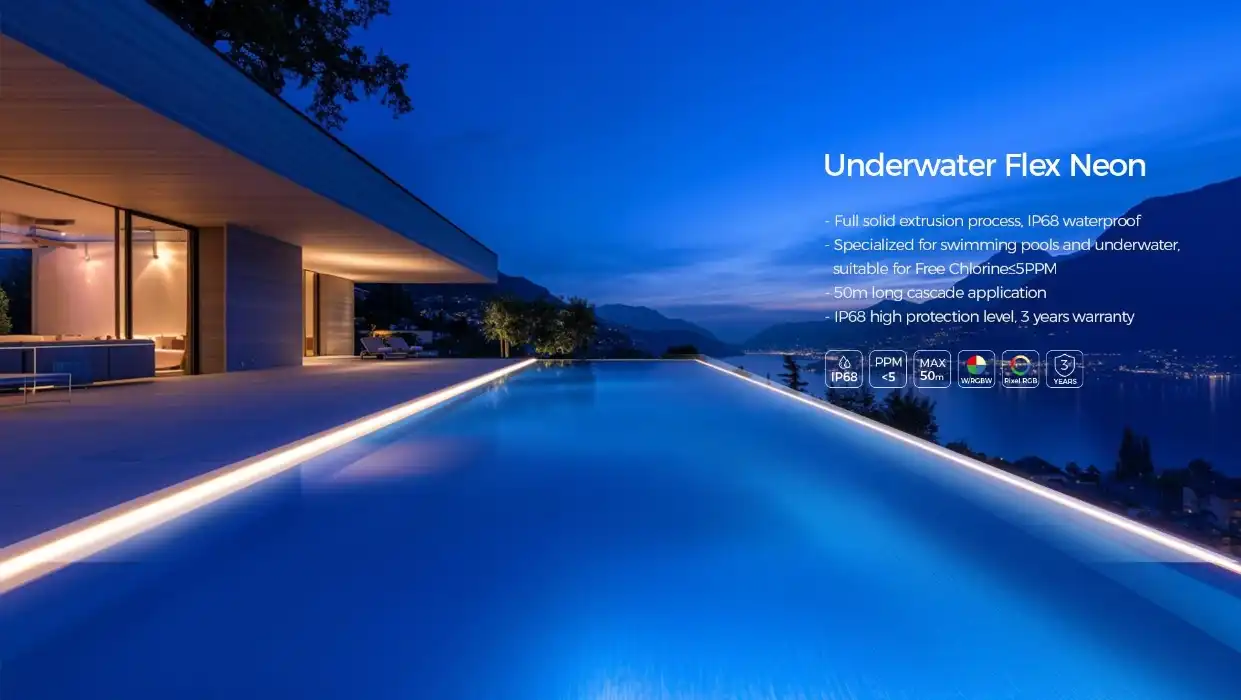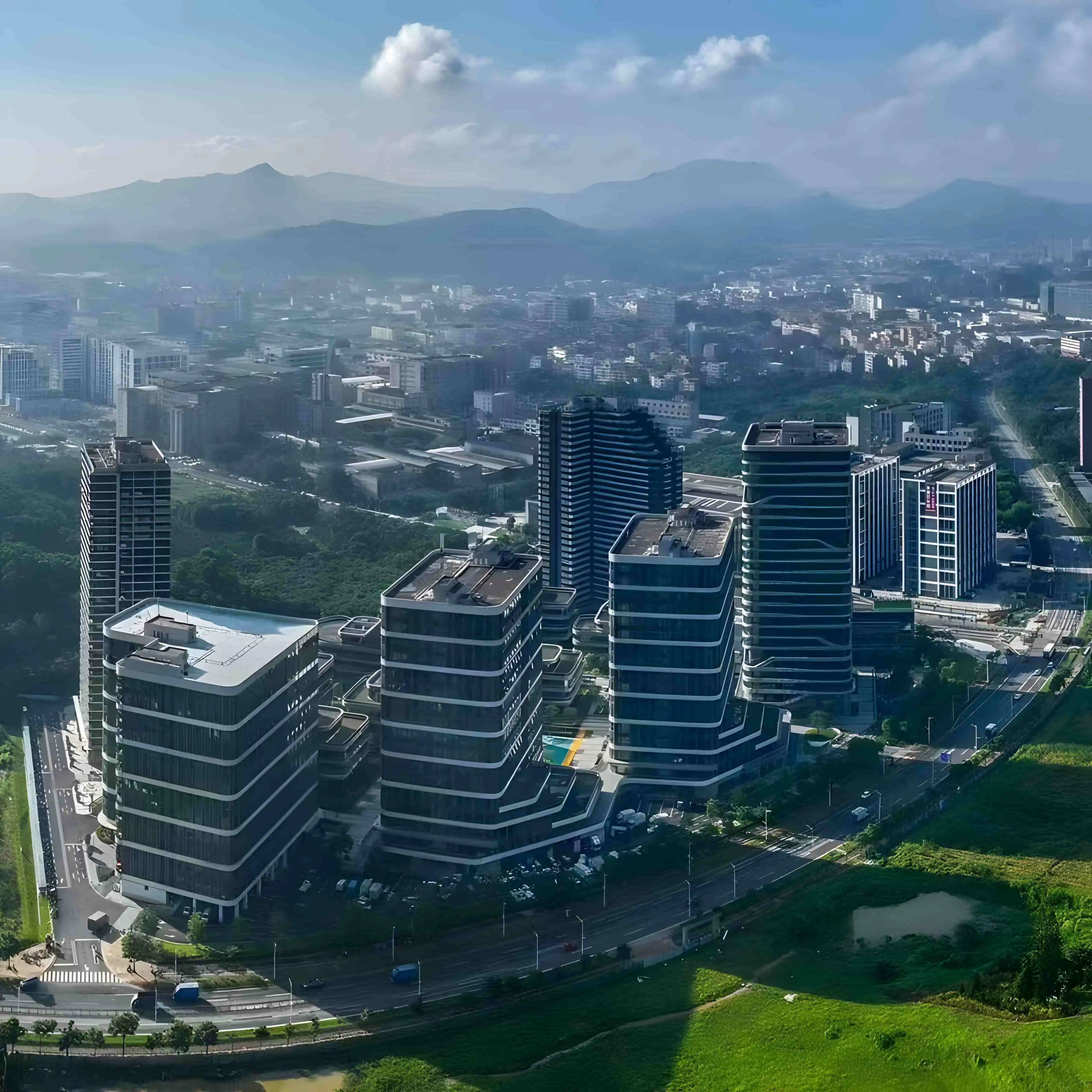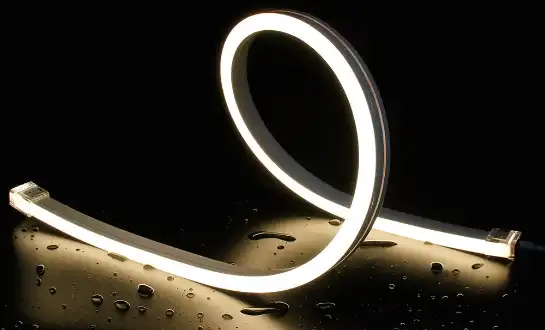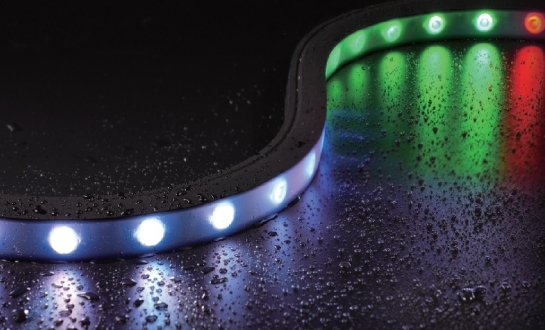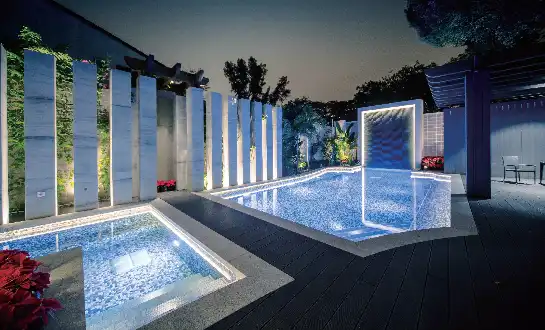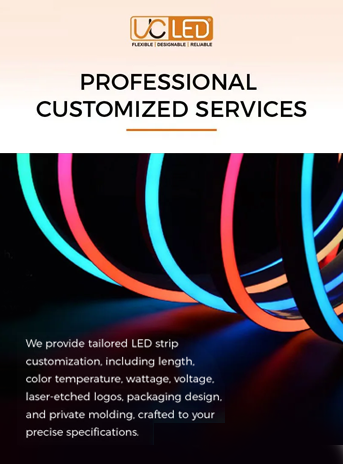Introducing Flexible Neon Tube Lighting Technology
Flexible neon tube lighting has revolutionized the illumination landscape, offering a blend of traditional neon aesthetics with modern LED technology. Unlike conventional neon lights, these flexible tubes utilize LED strips encased in a soft, pliable silicone or PVC casing. This innovative design allows for unprecedented flexibility in both installation and application.
The Science Behind the Glow
At the core of flexible neon tube lighting are tiny LED chips. These light-emitting diodes are strategically placed along a flexible circuit board, which is then encased in a translucent, colorful tube. When electricity flows through the LEDs, they emit light that diffuses through the outer casing, creating a smooth, continuous glow reminiscent of traditional neon.
Advantages Over Traditional Neon
Flexible neon tube lighting offers several advantages over its glass-tube predecessor. It's more energy-efficient, consuming up to 80% less power than traditional neon. The flexibility of the tubing allows for intricate designs and easy installation in tight spaces. Moreover, these tubes are shatterproof, making them safer and more durable for various applications.
Color Options and Customization
One of the most appealing aspects of flexible neon tube lighting is its vast array of color options. From vibrant primaries to subtle pastels, these tubes can be manufactured in virtually any color. Many models also offer RGB functionality, allowing users to change colors on demand or create dynamic lighting effects.

Factors to Consider When Buying Flexible Neon Tube Lighting
When venturing into the world of flexible neon tube lighting, several crucial factors should guide your purchasing decision. Understanding these elements will ensure you select the ideal lighting solution for your specific needs and environment.
Brightness and Luminosity
The brightness of flexible neon tube lighting is measured in lumens per meter. Higher lumen outputs result in brighter illumination, suitable for outdoor applications or areas requiring significant light. Consider the intended use of your lighting – decorative accents may require lower brightness, while signage or task lighting might necessitate higher luminosity.
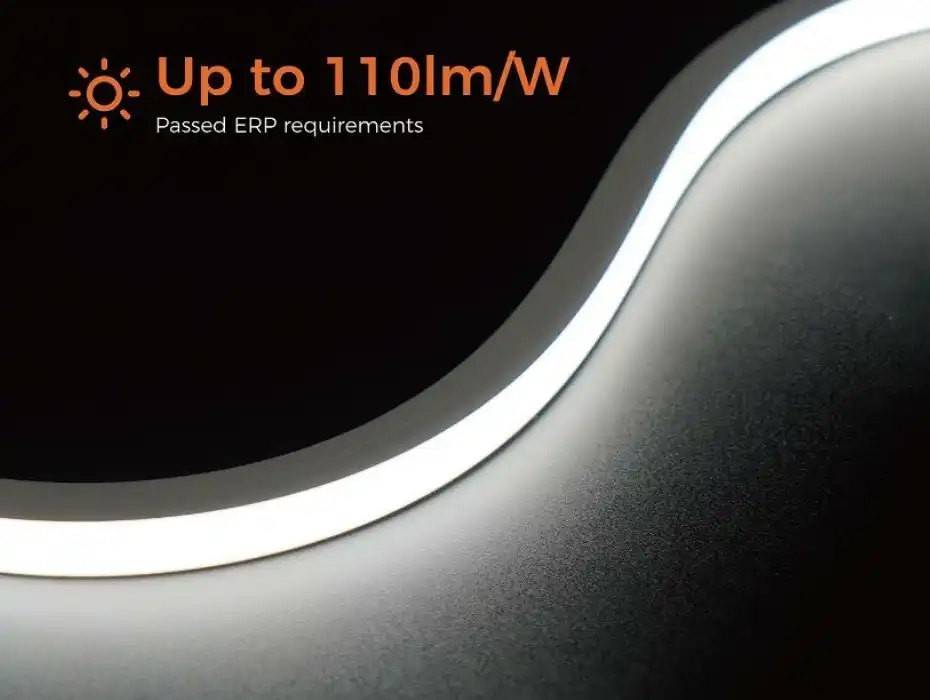
IP Rating and Weather Resistance
For outdoor applications or areas exposed to moisture, the IP (Ingress Protection) rating becomes crucial. Look for ratings like IP65 or IP67, which indicate resistance to dust and water. This ensures your lighting can withstand environmental challenges and maintain performance over time.
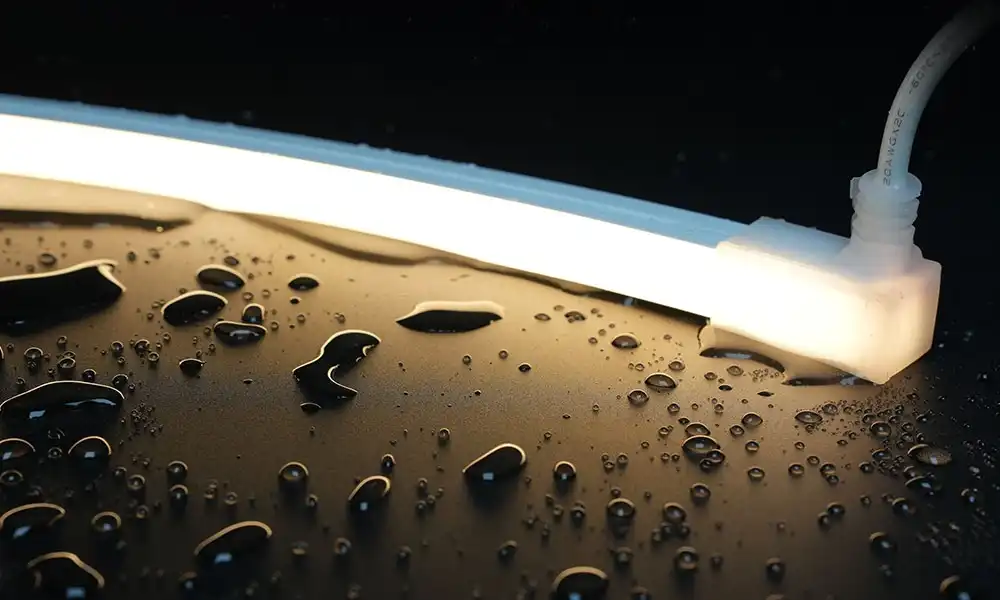
Power Consumption and Efficiency
Evaluate the power consumption of the flexible neon tube lighting, typically measured in watts per meter. More efficient models will consume less power while providing the desired brightness. This not only reduces energy costs but also allows for longer runs on a single power supply.
Flexibility and Bend Radius
The flexibility of the neon tube is a key consideration, especially for complex designs or installations in tight spaces. Pay attention to the minimum bend radius specified by the manufacturer. A smaller bend radius indicates greater flexibility, allowing for more intricate shapes and designs.
Color Temperature and CRI
For white light applications, consider the color temperature, measured in Kelvin (K). Lower values (2700K-3000K) produce warm, cozy light, while higher values (5000K-6500K) create cooler, more energizing illumination. Additionally, the Color Rendering Index (CRI) is important for applications where color accuracy is crucial, such as retail displays or art installations.
Installation and Maintenance Tips for Flexible Neon Tube Lighting
Proper installation and maintenance are crucial for maximizing the lifespan and performance of your flexible neon tube lighting. Following best practices ensures not only aesthetic appeal but also safety and longevity.
Preparation and Planning
Before installation, carefully plan your layout. Measure the installation area precisely and consider any obstacles or curves. Ensure you have all necessary components, including power supplies, connectors, and mounting brackets. It's often helpful to create a mock-up or template to guide your installation.
Mounting Techniques
Flexible neon tube lighting can be mounted using various methods, depending on the surface and desired effect. Adhesive backing is common for flat surfaces, while mounting clips or channels work well for more complex installations. Ensure the mounting method doesn't put undue stress on the tube, which could affect its performance or lifespan.
Power Supply Considerations
Selecting the right power supply is crucial. Calculate the total wattage of your installation and choose a power supply that can handle the load with some margin for safety. Place the power supply in a well-ventilated area to prevent overheating. For outdoor installations, ensure the power supply is properly rated for exposure to the elements.
Regular Maintenance
While flexible neon tube lighting is relatively low-maintenance, regular care can extend its lifespan. Periodically inspect the tubes for any signs of damage or wear. Clean the surface gently with a soft, dry cloth to remove dust and debris. For outdoor installations, check for moisture ingress or UV degradation, especially around connection points.

Troubleshooting Common Issues
If you encounter issues such as flickering or uneven lighting, first check all connections to ensure they're secure. Verify that the power supply is functioning correctly and providing the appropriate voltage. For RGB models, ensure the controller is properly synchronized. If problems persist, consult the manufacturer's guidelines or seek professional assistance.
Conclusion
Flexible neon tube lighting offers a versatile and energy-efficient solution for a wide range of lighting applications. By considering factors such as brightness, durability, and installation requirements, you can select the perfect product for your needs. When seeking a reliable flexible neon tube lighting supplier or manufacturer, look for companies with a proven track record of quality and innovation. Choose a supplier that offers comprehensive support, from product selection to after-sales service, ensuring your lighting project shines brilliantly for years to come.
FAQ
How long do flexible neon tube lights typically last?
High-quality flexible neon tube lights can last up to 50,000 hours or more, depending on usage and environmental conditions.
Can flexible neon tube lighting be cut to size?
Many models can be cut at designated points, but always consult the manufacturer's instructions to avoid damaging the product.
Are flexible neon tube lights safe for indoor use?
Yes, they are safe for indoor use as they operate at low voltages and don't contain harmful gases like traditional neon.
Expert Flexible Neon Tube Lighting Solutions | QUAN HE
QUAN HE Lighting Co., Ltd., established in 2015, is a leading manufacturer and supplier of premium flexible neon tube lighting solutions. Our state-of-the-art 5,000m² factory houses advanced SMT assembly lines and strict quality control processes, ensuring top-notch products. We offer tailored OEM and ODM services, backed by our expert R&D team and ISO-certified manufacturing facility. For innovative, reliable, and customized flexible neon tube lighting solutions, contact us at Linda@uc-led.com.
References
1. Johnson, A. (2022). "The Evolution of Neon: From Glass Tubes to Flexible LED Technology." Lighting Design Quarterly, 45(3), 78-92.
2. Smith, R. & Brown, T. (2021). "Energy Efficiency in Modern Lighting: A Comprehensive Guide to Flexible Neon Alternatives." Journal of Sustainable Illumination, 17(2), 205-220.
3. Lee, S. et al. (2023). "Advancements in Flexible LED Technologies for Architectural Lighting Applications." Proceedings of the International Conference on Lighting Design and Engineering, 112-128.
4. Martinez, C. (2022). "Installation Best Practices for Flexible Neon Tube Lighting in Commercial Spaces." Building Systems Technology, 29(4), 45-58.
5. Wong, H. & Taylor, K. (2023). "Comparative Analysis of Traditional Neon and Modern Flexible LED Neon: Performance, Efficiency, and Environmental Impact." Sustainable Lighting Solutions, 8(1), 12-28.
